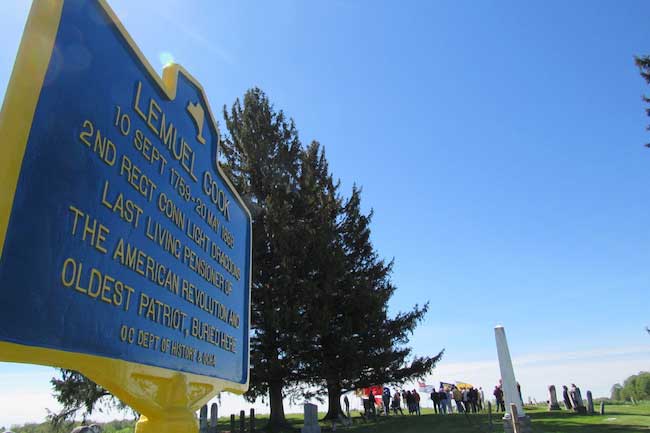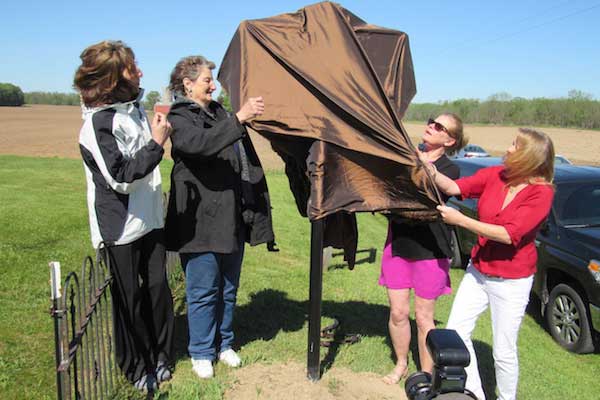Historic marker unveiled for Revolutionary War soldier who lived to be 107
Lemuel Cook, who is buried in Clarendon, was last pensioner from Revolutionary War
CLARENDON – Fourth generation great-granddaughters of Lemuel Cook – Cindy (Cook) Barker, Deborah (Cook) Dey, Diane Johnson and Valerie Johnson unveiled the New York State Historic Marker dedicated to Cook, a Revolutionary War soldier and the last official pensioner of the war, during ceremonies Saturday morning at Cook Cemetery on Munger Road in Clarendon.
The four women traveled to Clarendon from Michigan to attend the ceremony and descendants of Cook still living in Orleans County also attended.
Cook was the first of his brothers to enlist with the 2nd Connecticut (Continental) Light Dragoons, and served the duration of the American War for Independence. He came to North Bergen following the war in 1821 and eventually settled in Clarendon on South Holley Road around 1832.
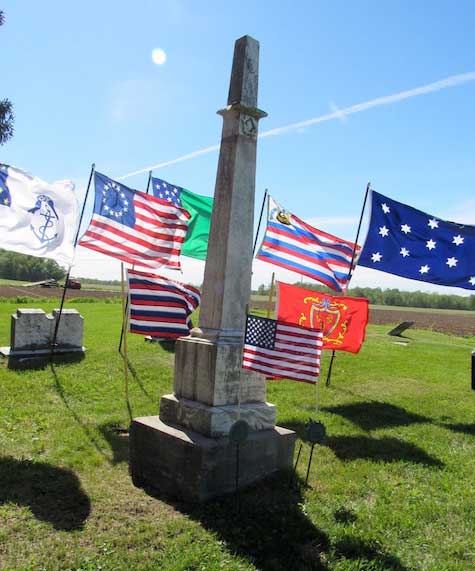
The grave of Lemuel Cook at Cook Cemetery was recently reset after the headstone was knocked down during the wind storm in March. The Orleans Chapter of the Daughters of the American Revolution supported efforts to reset it. The DAR worked with the Town of Clarendon and Brigden Memorials on the project.
Orleans County Historian Matt Ballard said Cook saw action at the Battle of Brandywine and Yorktown and met General George Washington – whom Cook, “held in high regard,” – on two occasions.
Ballard read Cook’s own account of his first meeting with General Washington, who asked Cook his name and was impressed with Cook’s horse.
“That’s a right smart mount you have,” Washington told Cook. The second time the two met, General Washington remembered Cook by name and the impressive horse, Ballard said.
Cook died on May 20, 1866, at the age of 107.
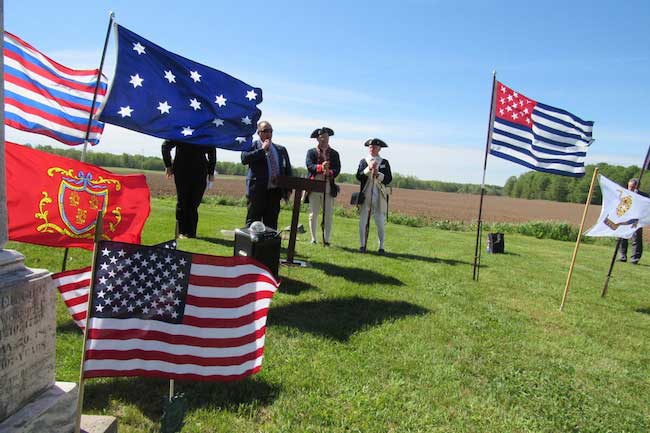
Earl Schmidt, director of the Orleans Veterans Services Agency said Cook fought for us and his service will never be forgotten. “We are here to make sure veterans are never left behind,” Schmidt said.
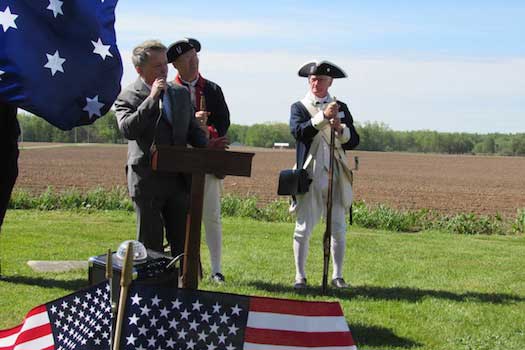
Orleans County Legislator Don Allport said Cook embodied the spirit of all American patriots who, “Stood up against the most powerful nation in the world.” He and other local officials thanked the Orleans County Legislature for their assistance in helping to recognize Cook with the historic marker.
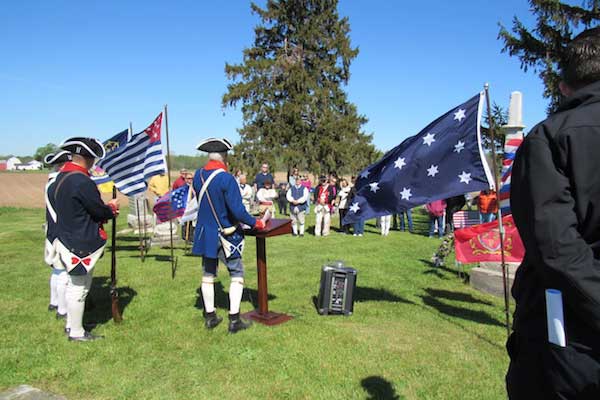
Members of the Rochester chapter of The Sons of the American Revolution wore Revolutionary soldier uniforms and honored Cook with a primitive gun salute after the unveiling. They brought reproductions of several flags used by the military during the Revolutionary War. The flag at the right with 13 white stars on a blue field was General George Washington’s flag.
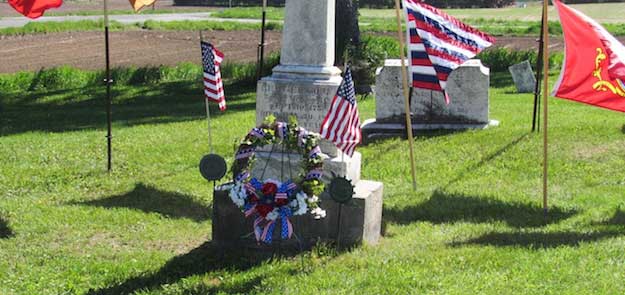
Members of the Orleans Chapter of the DAR placed a wreath at Cook’s grave following the unveiling of the historic marker.






























